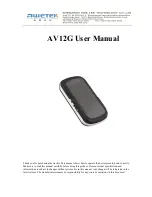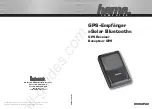
6
quality the unit currently has. The smaller the expected error number, the
better (and more accurate) the fix is.
If the expected error is flashing, then the unit has not locked onto the
satellites, and the number shown is not valid.
A battery level indicator on the lower right side of the
screen shows the approximately how much life is in
the batteries. This runs from “F” (fully charged) to “E”
(expired).
A light bulb indicator at the top right corner of the screen
appears when the backlights are on.
You can press the EXIT key anytime to erase this
screen. This automatically switches the unit to the last-
used navigation, plotter, or window group screen.
Finding Your Position
Auto Search
To lock onto the satellites, the GPS receiver needs to know it’s current
position, local time, and date. (Elevation (altitude) is also used in the equa-
tion, but it’s rarely required to determine a position.) It needs this data so
that it can calculate which satellites should be in view. It then searches for
only those satellites. When your GPS receiver is turned on for the first
time, it doesn’t know what your position or elevation (altitude) is. It does
know the current UTC time and date since these were programmed into it
at the factory and an internal clock keeps the time while the unit is turned
off. It begins searching for the satellites using the above data that it ac-
quired the last time it was turned on. This probably was at the Eagle fac-
tory. Since it’s almost certain that you’re not at the Eagle factory, it’s prob-
ably looking for the wrong satellites. If it doesn’t find the satellites it’s look-
ing for after five minutes, it switches to the Quick Initiailization screen.
This lets you enter your location from a list of states and countries. If you
simply press the EXIT key while the Quick Initialization screen is show-
ing, after a few minutes the unit begins to search for any satellite. This is
called “Auto Search”. Due to advanced technology, the auto search time
has shrunk to about five minutes, so the longest time you should ever
have to wait is ten minutes from the time you turn the unit on until it locks
onto the satellites and shows a position. Once the unit locks onto the
satellites, it should take less than a minute to find your position the next
time it’s turned on, provided you haven’t moved more than approximately
100 miles from the last location it was used.
Summary of Contents for Expedition II
Page 1: ...INSTALLATION AND OPERATION INSTRUCTIONS Expedition II TM...
Page 60: ...56...











































